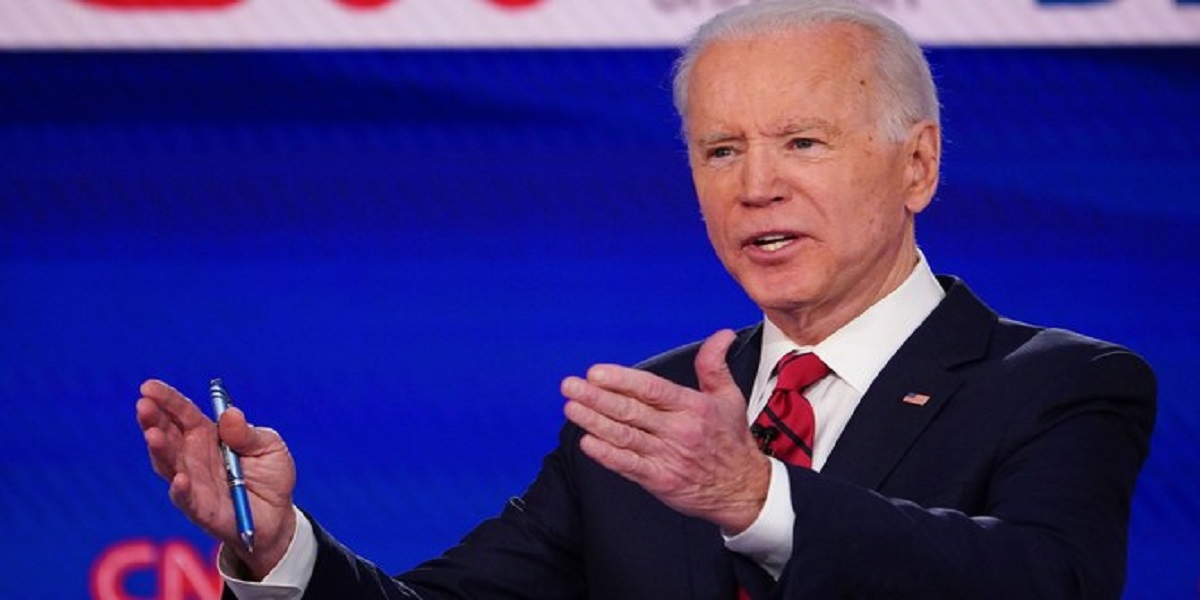US President Joe Biden will visit a town near the Polish-Ukrainian border Friday, aiming to convey Western commitment in the face of a Russian invasion that has devolved into a stalemate.
Air Force One will land in Rzeszow, Poland’s easternmost city, placing the US president within 80 kilometres (50 miles) of a war-torn country currently fighting a devastating Russian invasion.
The trip is designed to underscore Washington’s willingness to defend NATO allies, as fears rise that the month-old war in Ukraine could spill westward sparking what the US president has called “World War III.”
The Kremlin’s refusal to rule out the use of nuclear weapons and a steady flow of Russian disinformation about chemical and biological weapons in Ukraine has left Kyiv and its allies fearful of an even-more serious conflagration.
Russia has already been accused of employing phosphorous bombs and attacking civilian areas indiscriminately, which the US has condemned as a war crime.
In this context, Biden will meet with members of the US 82nd Airborne Division, which is part of NATO’s more muscular eastern flank deployment.
NATO confirmed the deployment of more soldiers to Romania, Hungary, Slovakia, and Bulgaria, as well as the strengthening of chemical and nuclear defences, at an emergency conference in Brussels on Thursday.
In Poland, Biden will also receive a briefing on the dire humanitarian situation in Ukraine, which has seen more than 3.5 million people pour out of the country, mostly to Poland.
The UN believes that more than half of Ukraine’s children have already been driven from their homes, “a grim milestone that could have lasting consequences for generations to come,” according to Unicef chief Catherine Russell.
“Every day it’s 20, 30 times we go to the basement (to shelter),” said a sobbing 37-year-old Vasiliy Kravchuk in the garrison town of Zhytomyr.
“It’s difficult because my wife is pregnant, I have a little son.”
Biden’s trip comes as the West faces urgent questions about what more it will do to help those like Kravchuk withstand the Russian onslaught.
– Plea for help –
Ukraine’s besieged president, Volodymyr Zelensky, pleaded with NATO on Thursday for unlimited armaments to help embattled Ukrainian cities like Mariupol hold out against Russian assault.
Around 100,000 inhabitants are said to be trapped in the southern port city, which is running out of food, water, and power as surrounding Russian soldiers grind it to dust.
Aerial imagery from Mariupol was published by Russia’s heavily regulated media, revealing a hellscape of burnt and pocked apartment towers sprawled across a singed and blackened wasteland.
Presenters blamed the devastation on Ukrainian “nationalists.”
Kremlin-allied Chechen warlord Ramzan Kadyrov on Thursday claimed his forces had pierced Ukrainian defences to take Mariupol’s city hall and hoist Russia’s flag.
That claim was not verified, and Ukraine’s armed forces said Russia was still trying to sack Mariupol “without success.”
The city is a treasured prize for Russia as it would enable a land bridge between Russian-annexed Crimea and regions already controlled by Russian proxy forces in eastern Ukraine.
While some civilians have been able to flee to Ukrainian-controlled territory, local officials said as many as 15,000 Mariupol residents have been forcibly deported to Russia.
– Counterattack –
In recent days Ukraine has also shown its ability to go on the counter-attack, seemingly pushing Russia’s military out of towns near Kyiv and hitting valuable Russian targets in the south.
Ukraine on Friday claimed it had destroyed or damaged a small flotilla of Russian warships in the Ukrainian port city of Berdyansk.
According to the Ukrainian armed forces, Russian landing ship the “Saratov” was destroyed, and the landing ships “Caesar Kunikov” and “Novocherkassk” were damaged.
Images from the scene showed a large Russian warship ablaze at dockside, with other vessels steaming away from the inferno.
British military intelligence said the attack on “high-value” targets also destroyed an ammunition storage depot and was part of a broader strategy of Ukraine targeting vulnerable Russian supply lines.
“Ukrainians will continue to target logistical assets in Russian-held areas,” the UK Ministry of Defence said.
“This will force the Russian military to prioritise the defence of their supply chain and deprive them of much-needed resupply for forces.”
– Summits –
Zelensky wants NATO to help Ukraine go further on the offensive with more advanced fighter jets, missile defence systems, tanks, armoured vehicles and anti-ship missiles.
His call for the floodgates to open and the West to deliver “all the weaponry we need” has gotten a mixed response so far.
NATO leaders indicated they were willing to provide more of the Javelin and Stinger missiles that had repulsed scores of Russian tanks and fighter jets during an emergency summit in Brussels on Thursday.
Kyiv’s allies are said to be discussing sending anti-ship missiles to Ukraine, although there were “some technical challenges,” according to a senior US official.
But the United States has so far ruled out sending fighter jets or other large weapons systems.
Biden has repeatedly said he does not want to cross a line into what he says could pit nuclear-armed Russia against NATO.
For now, the West is content to squeeze Russia’s economy and Putin’s inner circle.
The European Union and the G7, also meeting in Brussels on Wednesday pledged to block transactions involving the Russian central bank’s gold reserves, to hamper any Moscow bid to circumvent Western sanctions.
And a series of countries announced asset freezes and travel bans on more Kremlin-connected individuals.
There was no agreement to halt oil and gas imports from Russia, which fill Moscow’s war chest to the tune of hundreds of millions of dollars per day.

















